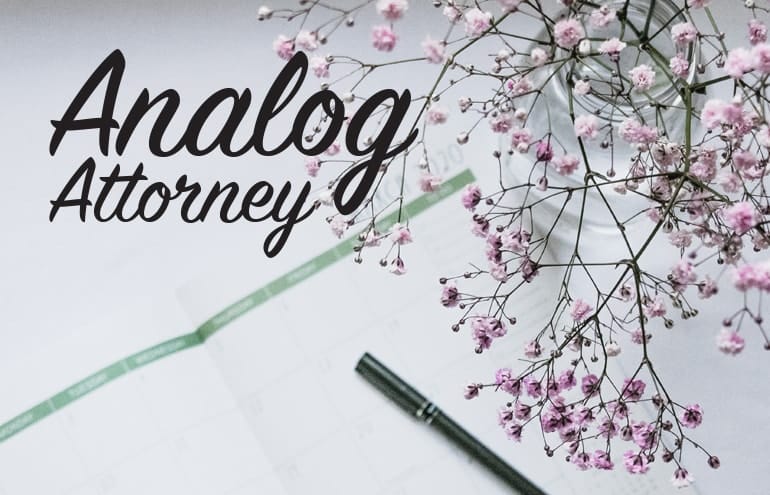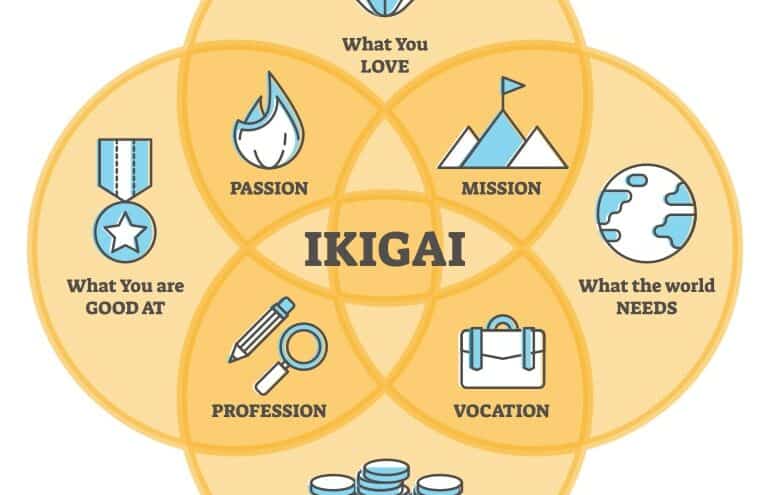Ikigai is a Japanese career assessment tool. It uses a simple method to assess your inventory and then point you in a more focused direction.

My Ikigai is storytelling. It took me a while to come to terms with this, but it shouldn’t have.
First, I’ve been telling stories since I was in kindergarten. Second, I’ve been writing features and columns in print and online since 1988. So it should have been obvious this is my wheelhouse. It would have been if I’d used Ikigai.
Roughly translated, Ikigai it means “reason for being,” or purpose. It works. And right now, in the 87th month of 2020, with legal jobs in jeopardy, you need it.
The popularity of personality tests like the Myers-Briggs, 16 Personalities (I’m an EMFP), enneagrams (7), and even the Harry Potter sorting hat test (Hufflepuff) means people are assessing themselves and will pay for the privilege. But at the heart of those assessments lies an unanswered question: Not who am I, but what should I do?
In a world where money and happiness are not necessarily linked, this is a serious question.
Isn’t Ikigai Just Another Personality Test?
Ikigai works by asking you to answer a series of questions about four domains:
- What do you love?
- What are you good at?
- What does the world need?
- What are you paid for, or what could you be paid for?
Once you define these traits you look for the connections — or the places where your answers overlap in the diagram.

I know, most self-assessments ask questions and use a magical formula. But Ikigai is different. It’s accessible. Transparent. Obvious.
Hamza Khan breaks down the process in his popular Medium article, including 14 questions to ask yourself. The questions don’t define you or your path. You use them to define yourself and your path. Ikigai uses no database. No math.
That’s a wide gap between Ikigai and other tests because Ikigai isn’t a test. Ikigai is more like an interview. I asked Dr. Haley Fox, author of “Follow Your Bliss,” to help me understand how it’s different:
“What stands out about Ikigai is its holistic nature. I can assess each opportunity that presents itself based not only on pay, not only on what I’m good at or what I love, not only on what the world needs — but based on all of these domains. The better I understand my values, the wiser I will be in evaluating opportunities. In my experience, finding something I love to do that the world also needs affords the most joy. The person who finds all four is a fortunate person indeed.”
How Ikigai Works
The Myers-Briggs tells me I’m an EMFJ. I’m a strong seven on the enneagram and personalities; I’m an ENFP-T campaigner. Those tests are fascinating. I’m happy to wear my IMFJ badge on my sleeve, but they don’t — they can’t — show me what to do with my life. They don’t advise me. Ikigai doesn’t advise either, but it comes close. It’s more like a tool for tuning your career from being OK to exactly the career you want.
For instance, the question of what you love is more complicated than it seems. Khan breaks it down. This question is asking: Is what you’re doing something you’re genuinely passionate about?
- Could you enthusiastically talk about your profession for hours and hours?
- Are you emotionally connected to the result of your work?
- Do you think that you could out-care other people in your field?
- If you weren’t concerned about money, would you still do what you’re doing?
I have two motivations that get me out of bed in the morning. First, my coffee game is on point. Second, I can’t wait to get back into whatever story I’m writing. That’s where I live. But it wasn’t always like that. I knew a few things about myself. But it took me a long time to realize that even though I was working in the right industry, I was doing the wrong work. I wish I had learned about Ikigai sooner.
How to Use Ikigai to Change Your Life by Changing How You Work
So you’re a lawyer. Say you’re a fourth-year associate in a large firm doing solid work in IP. You are very good at your job, but you aren’t thrilled with it. So you ask yourself: Are you emotionally connected to the result of your work?
And your answer is … no. Of course, you can talk about it for hours — you can hold your own. But it doesn’t inspire you. You’re grinding, and you know it.
Except when you’re writing contracts. Contracts get your blood pumping. They’re like a true-crime novel in reverse. You find yourself in the middle of a deal humming a tune and tapping your foot and wait — what is that? Why contracts? So, asking again: Are you emotionally connected to the result of your work?
Yes — when it contracts. This has never occurred to you. You mention it to the partner you work with. You say, “I swear if I could make contracts all day ….” Without missing a beat, she says, “You’re talking about an in-house counsel position.” “It’s high-energy stuff.” And just like that, a new career path is born.
But is it the right career path?
Who can say? What you can do is run it through Ikigai. The heart of the diagram, where each trait overlaps, is your Ikigai. That is your reason for being.
Maybe you see a listing for in-house at a publishing firm with a fleet of high-traffic websites. They need precisely your kind of expertise to cover business law. You run it through your Ikigai grid, and it checks off everything in the affirmative. Except for those first three questions. Most of their online assets are embarrassing — even offensive. You wouldn’t read those sites if you didn’t have to for work. They might be doing more harm than good. You could never be passionate about them. You could never talk enthusiastically about them, not even for a single second. Your emotional connection to your work would be regret.
So: Does the world need this work? Are you solving an actual problem?
Hell no and no.
This is why these questions matter. You see that in the framework of the Japanese purpose grid, you’re not going to achieve optimal Ikigai. It’s close. But you’ll feel like washing your hands all day. Every day. You decline.
Then you find a listing for a company that does almost the same thing. Except their media assets are so Apple Pie wholesome, they make Jimmy Carter look shady. You run it through the diagram, which points to optimal Ikigai. You take the job. Two years later, you’re on a flight to Spain to wrap up a contract with a sustainable printing company acquisition. You realize that the weird buoyancy and verve you feel is contentment. A purpose for being.
Look, There Is No Silver Bullet to Career Happiness
No magic formula, either. But you can always hone your job and focus your purpose and try to get closer.
As we tunnel out of the rubble of 2020, you’d be right to do a little career assessment.
You’d be right to ask yourself if you’re thinking about a change, why not make a bold leap? Why not go for what you love, what the world needs?
Image © iStockPhoto.com.

Don’t miss out on our daily practice management tips. Subscribe to Attorney at Work’s free newsletter here >
Illustration © debby hudson unsplash.com
Subscribe to Attorney at Work
Get really good ideas every day for your law practice: Subscribe to the Daily Dispatch (it’s free). Follow us on Twitter @attnyatwork.






















